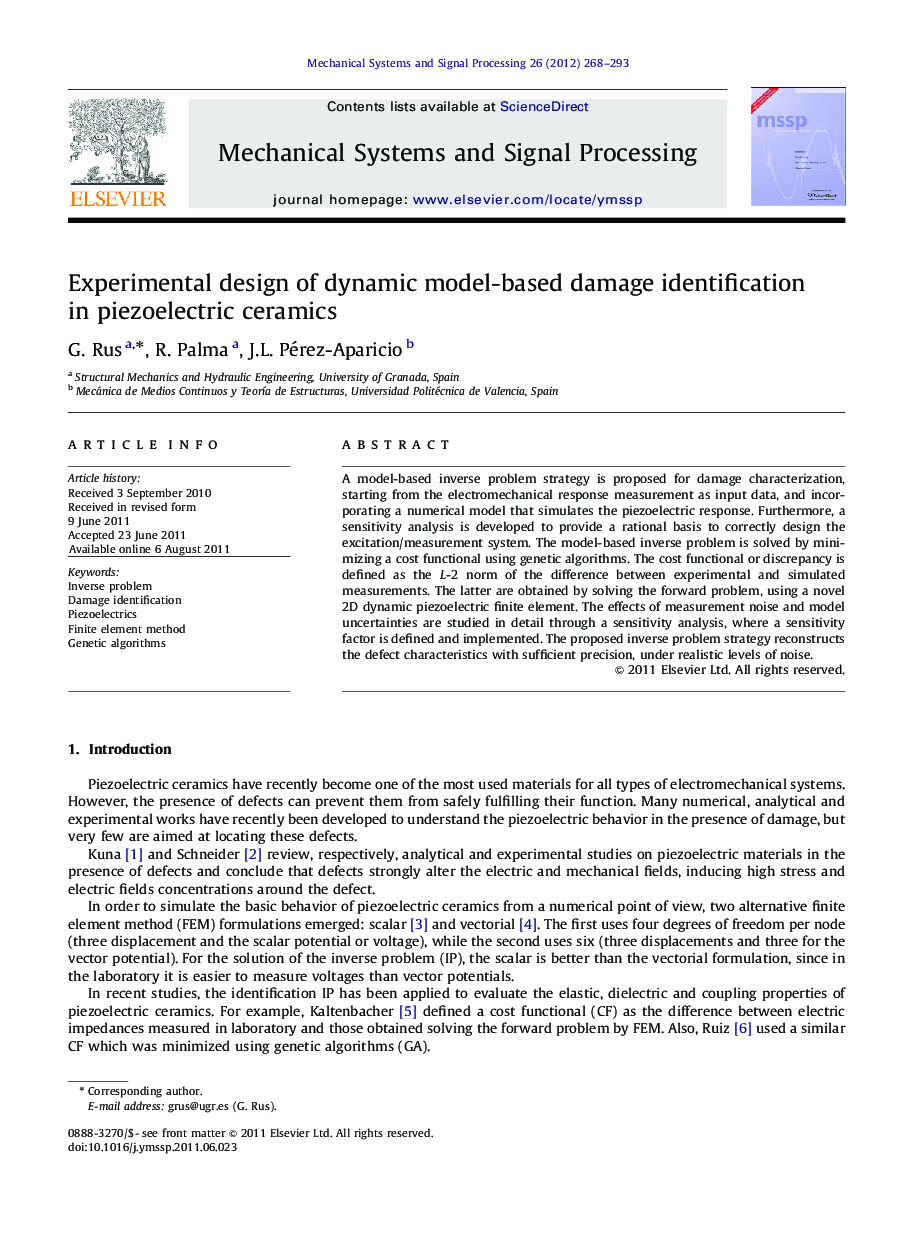| Article ID | Journal | Published Year | Pages | File Type |
|---|---|---|---|---|
| 560709 | Mechanical Systems and Signal Processing | 2012 | 26 Pages |
A model-based inverse problem strategy is proposed for damage characterization, starting from the electromechanical response measurement as input data, and incorporating a numerical model that simulates the piezoelectric response. Furthermore, a sensitivity analysis is developed to provide a rational basis to correctly design the excitation/measurement system. The model-based inverse problem is solved by minimizing a cost functional using genetic algorithms. The cost functional or discrepancy is defined as the L-2 norm of the difference between experimental and simulated measurements. The latter are obtained by solving the forward problem, using a novel 2D dynamic piezoelectric finite element. The effects of measurement noise and model uncertainties are studied in detail through a sensitivity analysis, where a sensitivity factor is defined and implemented. The proposed inverse problem strategy reconstructs the defect characteristics with sufficient precision, under realistic levels of noise.
► An inverse problem method is proposed to characterize damage in piezoelectric plates. ► A sensitivity analysis is developed to optimally design the excitation/measurement. ► The sensitivity incorporates material and geometrical randomness and uncertainties. ► Electric excitation transverse to the polarization is identified as optimal. ► Its combination with electric measurement is identified as optimal.
